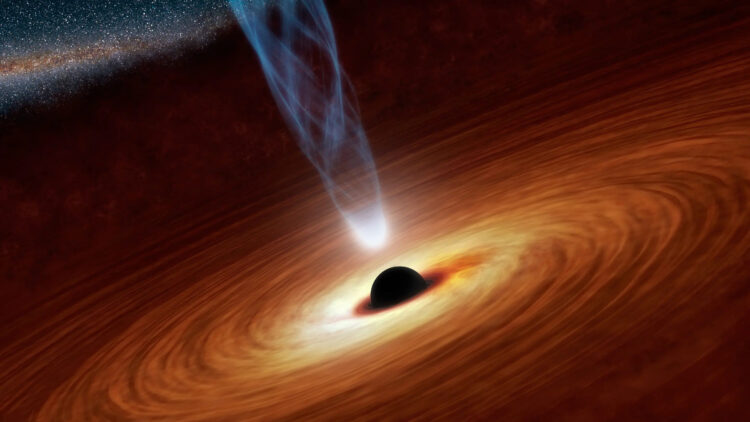The universe is filled with mysteries and dangers lurking in its vastness. Among these astronomical enigmas, NASA’s Chandra X-ray Observatory has recently unveiled a chilling discovery: a supermassive black hole is causing chaos in a distant galaxy, tearing apart stars in a gruesome display of cosmic power. Situated 210 million light-years away in the galaxy AT2019qiz, this black hole serves not only as a celestial predator but also as a catalyst for understanding the dynamics of such extreme environments.
Monster black hole: A cosmic horror show that threatens the fabric of the universe
The saga began in 2019 when astronomers first observed a “tidal disruption event” (TDE) as a star ventured too close to the aforementioned black hole, leading to its disintegration. As a result, the remnants of this star formed a thick disk of material around the black hole, akin to a stellar graveyard.
Recent observations using Chandra, Hubble, and other telescopes have revealed this disk has expanded greatly over time. This has resulted in the creation of a hazardous zone where another star or a smaller black hole now orbits precariously.
According to lead researcher Matt Nicholl from Queen’s University of Belfast in Northern Ireland, the situation is reminiscent of a diver repeatedly splashing into a pool.
“Each time the star strikes the surface, it creates a huge ‘splash’ of gas and X-rays,” Nicholl explains. “As the star orbits around the black hole, it does this over and over again.”
These frequent impacts, which occur approximately every 48 hours, generate bursts of X-rays that scientists have detected. This provides valuable insights into the dynamics of black hole interactions.
TDEs and QPEs: Linking two cosmic mysteries
This discovery not only sheds light on the destructive power of supermassive black holes but also connects two previously separate cosmic phenomena: TDES and quasi-periodic eruptions (QPEs).
The latter refers to the recurring X-ray flares that were observed near black holes, which had remained largely mysterious until now. The research indicates that QPEs likely occur when objects collide with the expanding debris formed after a TDE.
“There had been feverish speculation that these phenomena were connected, and now we’ve discovered the proof that they are,” says co-author Dheeraj Pasham of the Massachusetts Institute of Technology in Cambridge. “It’s like getting a cosmic two-for-one in terms of solving mysteries.”
The implications of this research are vast, allowing astronomers to refine their understanding of how often these catastrophic events occur and what types of celestial bodies are drawn into the gravitational grip of supermassive black holes.
A new era for observational astronomy
The research team leveraged extensive data from Chandra and Hubble, revealing the increasing size of the debris disk around the black hole.
This disk has become large enough to affect any object orbiting the black hole within a week or less, resulting in explosive X-ray emissions. This marks a major breakthrough in astronomers’ understanding of the processes driving black hole activity.
What’s more, these findings pave the way for future investigations into the prevalence of such events. Identifying more TDEs and QPEs will help astronomers assess the distribution of objects around supermassive black holes and their potential as targets for gravitational wave observatories.
As NASA continues to explore the depths of space, the discovery of this “planet-killing monster” serves as a reminder of the universe’s terrifying nature. With the Chandra X-ray Observatory leading the charge, our understanding of supermassive black holes and their interactions with nearby celestial bodies is advancing rapidly. As we unravel these mysteries, we gain not only knowledge but also a deeper appreciation for the wondrous complexity of the universe.

